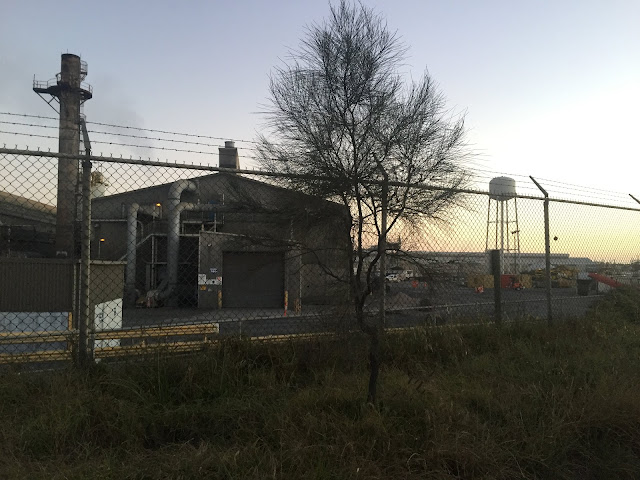What Alcoa left behind.
As globalisation took over Geelong's manufacturing giants could not keep up. The mid-2010s saw major employers Ford, Shell & Alcoa all pull out of the city leaving behind their vast facilities. The biggest being Alcoa's Point Henry Aluminium Smelter and the electrical infrastructure that powered it for so many years.
By the mid-1960s the smelter was consuming as much electricity as the entire city so another power source was needed, enter the Anglesea Power Station owned and operated by Alcoa. Bought online towards the end of the 60s the station topped up power from the grid to support the smelter.
When the smelter began to wind down in the 2010s Alcoa had hoped to sell the Anglesea Station to an electricity provider to supply electricity to the general public. At this stage, the plan was surrounded by controversy from Anglesea locals who were increasingly concerned about the stations' contribution to Climate Change and the health effects it had on residents. This resulted in Alcoa failing to sell off the asset and they were forced to close and de-commission the station.
 |
| Point Henry Smelter in 2016 [Me] |
Opened in the early 1960s, Initially Point Henry got its power from the grid as anyone else would but it was evident that something more sufficient was needed. A 220 kV transmission line circling the southern edge of Geelong was built and connected to the Geelong Terminal Station in Norlane to the smelter. The alignment headed south from the terminal station following the since built Geelong Ring Road then cutting through the developing suburbs of Highton, Grovedale and Marshall before heading back north towards the smelter via Moolap.
 |
| Map of Point Henry to Geelong Terminal Transmission Line Alignment [Base Map: Google, Shapefile: Geoscience Australia] |
| [John Englart - Wikimedia] |
It was connected via a 30km 220 kV transmission line running directly from Anglesea to Point Henry.
 |
| Map of Point Henry to Geelong Terminal Transmission Line Alignment [Base Map: Google, Shapefile: Geoscience Australia] |
The transmission lines connecting the station and smelter were removed from 2017 to 2020 in 5 stages by Beon Energy Solutions on behalf of Alcoa.
If kept the alignment of the lines would cut directly through the new Amstrong Creek Development and would likely have changed the suburb design as the lines would travel directly over what is now The Village Warralily Shopping Centre.
 |
| Barwon Heads Road in 2008 showed the now removed Anglesea Power Station to Point Henry transmission lines. [Google Street View] |
 |
| The same section of road in 2020 shows the new shopping centre. [MNG] |
As for the link between the Geelong Terminal Station and Point Henry things are not so simple. The lines and towers are still standing but have been offline for quite some time despite the majority of the smelter now being demolished. This has got local residents fired up as many property owners along the alignment believe easements on their properties should now be removed.
Two easements were provided directly adjacent to each other with the northern one housing the existing transmission lines. The southern easement was provided provisionally for future upgrades but due to Alcoa opening another smelter at Portland this was never used.
 |
| The easements general area in Grovedale highlighted in red. [Google Earth] |
Managers of the easements AusNet claim that both easements will be used to supply residential expansion in Geelong's east, despite this some properties have been sold without the southern provisional easement allowing property owners to greater utilise their land. Only time will tell if this line will be re-electrified or demolished like its sibling to Anglesea.
The demise of Alcoa and others has led to great change in the region with an economic shift to tourism as opposed to manufacturing. Both Point Heny and Anglesea still sit empty with many different revitalisation ideas coming and going. It's been almost a decade since the closure of Alcoa so who will know if the sites and adjoining transmission lines and easements will change in the next decade.
Comments
Post a Comment